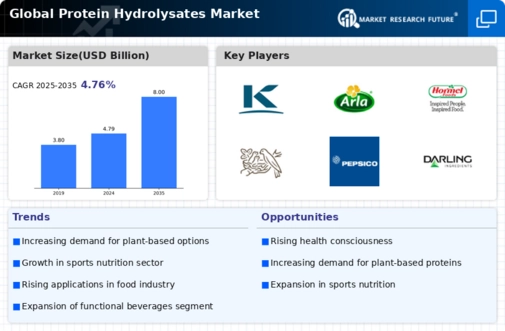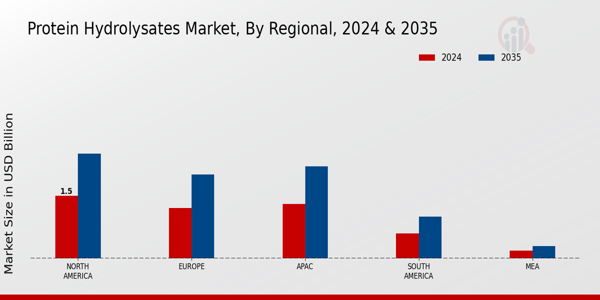Market Trends
Key Emerging Trends in the Protein Hydrolysates Market
The protein hydrolysate market has seen major changes that are transforming the industrial landscape. One of the most noticeable industry trends is the growing customer knowledge and interest in health and wellness goods. As more individuals become more aware of their nutritional choices, there is an increased demand in protein-rich meals, and proteins hydrolysates, that have been broken down into shorter peptides for faster absorption, have grown in popularity.
Furthermore, the sports nutrition industry has emerged as a major driver of the protein hydrolysate market. Fitness enthusiasts and athletes are looking for goods that help with muscle rehabilitation and performance. Protein hydrolysates, because of their rapid absorption and accessibility, are being added into sports food formulations, including protein drinks and bars, to address the nutritional demands.
Another notable development is the growth regarding the protein hydrolysate market into uses other than sports nutrition. Protein hydrolysates are increasingly being used as components in a variety of products, particularly in the field of food and beverages. These include baby formula, dietary additives, and functional foods that take use of protein's ability to promote development and general well-being.
Furthermore, the industry is moving towards protein from plants hydrolysates. With the growing popularity of diets based on plants and the need for different protein sources, companies are investigating the possible application of plant-derived proteins in hydrolysate manufacturing. This is consistent with the general trend regarding sustainability and awareness of the environment, as plant-based proteins tend to have a smaller environmental effect than animal-derived proteins.
The region of Asia-Pacific is establishing itself as a prominent participant within the protein hydrolysates marketplace, owing to a growing middle-class population, increased disposable income, and shifting dietary habits. The need for nutritious and functional meals in nations such as India and China is driving market expansion in this area. Furthermore, increasing knowledge of wellness and physical activity in these areas is driving up the need for protein hydrolysates.
Technological improvements in protein hydrolysate manufacturing techniques have an impact on market dynamics. Manufacturers are spending in R&D to increase the effectiveness of hydrolysis techniques and the standard of the finished product. This emphasis on innovation is intended to fulfill growing customer expectations for cleaner labeling, greater flavor, and more nutritious profiles.


 Source: Primary Research, Secondary Research, MRFR Database and Analyst Review
Source: Primary Research, Secondary Research, MRFR Database and Analyst Review











Leave a Comment